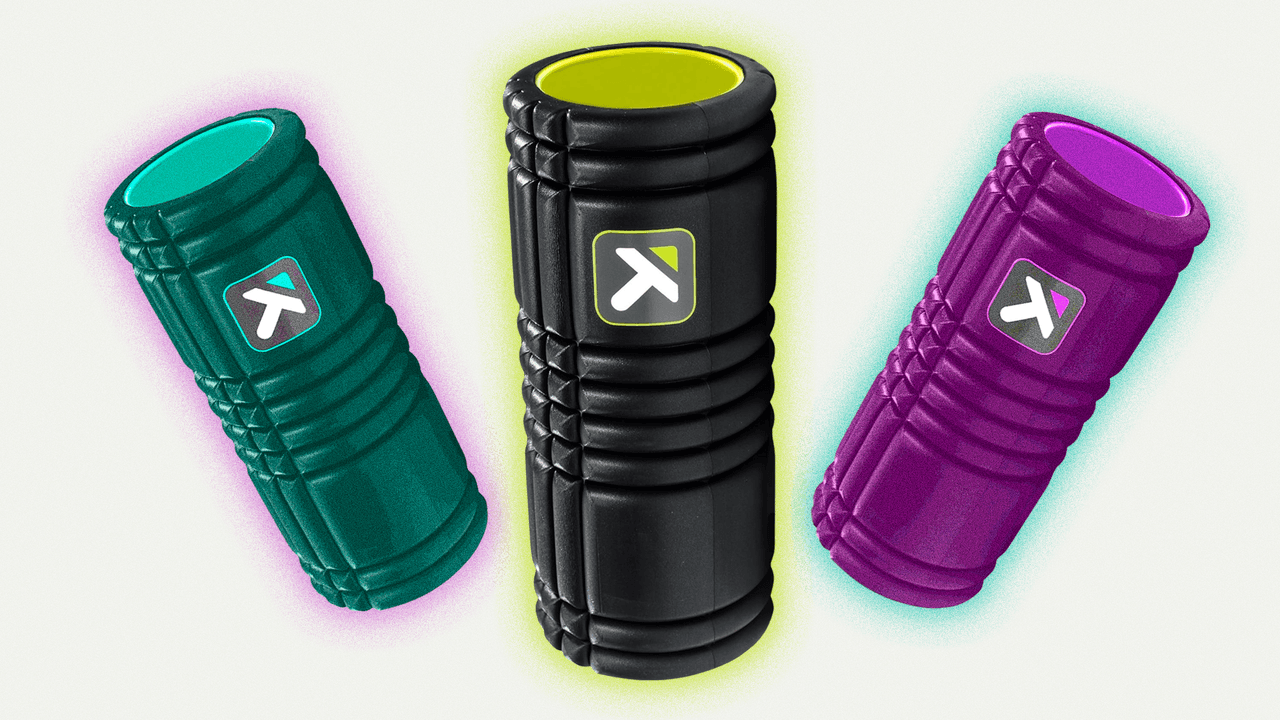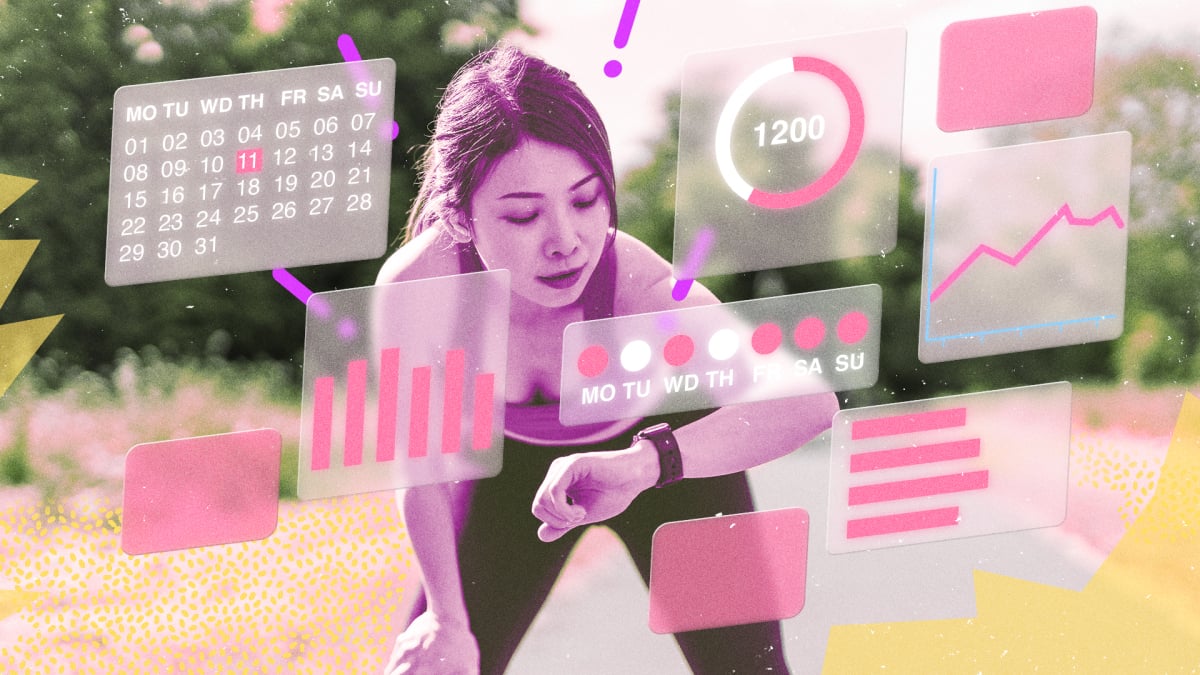Foam rollers are everywhere these days—at the gym, under your desk, collecting dust under the sofa—but does anyone actually know how to use a foam roller? Done well, foam rolling can ease tightness, increase blood flow, and help you move more freely before or after a workout. Done poorly, it just feels like a painful waste of time.
To figure out how to actually make foam rolling effective, I talked to two experts: James Chung, DPT, a sports physical therapist and strength coach at MotivNY in New York City, and Austin Martinez, CSCS, vice president of training and experience at StretchLab. From how long to roll to which muscles to target (and which ones to skip), they broke down what matters, what doesn’t, and why foam rolling isn’t just about pain tolerance—it’s about purpose.
Whether you’re using it to recover from a tough training session, loosen up before a lift, or just take the edge off from sitting all day, this guide will help you get more from your foam roller with a lot less guesswork.
In This Guide
What Is Foam Rolling?
Think of foam rolling as a reset button for your muscles—not a magic fix, but a quick way to reduce tension, restore mobility, and get blood flowing to the areas that need it most. It works through pressure, not intensity: you’re helping the tissue release and recalibrate, not forcing it into submission.
Reducing muscle tension is the primary purpose of foam rolling, according to Martinez. “Because you’re applying pressure to that muscle tissue, you’re breaking up any adhesions that might be within,” he says. These adhesions, he explains, are like tiny sticky glue spots that build up in the muscle tissue over time. “If you have so many of these adhesions, it restricts your mobility, it restricts your flexibility and your movement patterns.” Foam rolling helps break them up, giving the muscle fibers a chance to realign properly, which can improve mobility and help restore more natural movement patterns. If you’re feeling unusually stiff in your hips or shoulders, it could be the result of adhesions limiting how well the muscle can lengthen and contract.
Martinez adds that circulation is another key benefit: “It’s going to promote blood flow and circulation into those areas, which can be really beneficial to get new oxygen, nutrients to that muscle tissue.”
Chung emphasized that the relief people feel from foam rolling is often less about structural change and more about sensory feedback. “You do get a very temporary reduction in pain and temporary change in sensation, which is enough to increase performance if somebody is limited by the presence of some of those negative sensations,” he says.
In practice, that might mean using a roller on your quads or glutes before a lower-body workout to improve range of motion, or targeting your back and lats at the end of the day to reset posture and release tension. It’s not a fix-all, but when used consistently and strategically, foam rolling can be a valuable part of a well-rounded movement or recovery routine.
Common Foam Rolling Mistakes—and How To Fix Them
Foam rolling isn’t complicated, but it’s easy to make it less effective if you rush through it, zone out, or target the wrong areas. These are the biggest mistakes experts see—and how to avoid them.
Foam rolling isn’t about racing back and forth over a muscle. The real benefit comes from applying sustained pressure to tight areas, not quickly moving over them. Chung recommends finding a tender spot and holding pressure there instead of constantly rolling. “If you spend more time holding a pressure point instead of just rolling, you get a lot more relief,” he says.
Expecting one session to fix everything
Like anything else in fitness, foam rolling only works if you’re consistent. “A big misconception is, ‘I’m going to only foam roll when I’m sore, when I feel like I need it,’” Martinez says. “But we know that recovery is best done all the time—especially when you don’t need it.” Making it a regular habit can help prevent that sore, tight feeling from building up in the first place.
Rolling over bones or joints
Foam rolling should target muscle and fascia—not bones, ligaments, or joints. “Stay over the muscle tissue, not trying to roll over bone or ligaments or anything of that nature because one, there’s really no benefit, and two, it’s going to be painful,” Martinez says. Stick to soft tissue areas like calves, quads, glutes, and lats.
Thinking pain equals progress
More pressure doesn’t always mean more benefit. “You can actually get more relief if you find a level of intensity you can breathe through,” Chung says. Applying a tolerable amount of pressure—not overwhelming force—helps send a signal to your nervous system that it ’s safe to relax, which can lead to better release and recovery.
How Do I Foam Roll Effectively?
There’s no “right way” to foam roll, but a few expert-backed techniques can make a big difference in how effective it actually is. Whether you’re using it to warm up, cool down, or break up stiffness after a long day, these tips will help you get more out of every session.
Think of pre-workout foam rolling as prep work: You’re getting blood flowing and priming your muscles for movement. “With your foam rolling before, it can be quicker movements,” says Martinez. Rather than stopping on tender spots, “you’re kind of scanning across the entire muscle,” he says, adding that it’s going to help increase blood flow and prime the muscle. He recommends combining this with with some dynamic stretching to really prep your system for movement.
Post-workout, the goal shifts to recovery. Martinez recommends slowing down and spending more time on any tight or tender spots. “Now I’m really looking at breaking up adhesions that I built in through the workout, reducing muscle tension, increasing circulation at a deeper level,” he says. He suggests focusing on specific sections of a muscle—“break it up into threes,” he says—rather than rushing through the whole length.
Use it to build body awareness
Foam rolling isn’t just about fitness—it’s also a way to learn how your body feels. “In your first few sessions, just focus time on learning your body,” says Martinez. “Are there areas that have a general sense of tension or pain or discomfort? That’s maybe where you hold your stress.” Once you notice those patterns, you can tailor your routine to the areas that need more attention.
Spend more time holding, not just rolling
Chung emphasizes that the goal isn’t to grind into your muscle—it’s to create a release. “If you find a space that feels sensitive and you apply pressure that feels tolerable and hold it there for about two minutes, you get a lot more relief when you take that pressure out,” he says. Sustained pressure, paired with calm breathing, signals to your nervous system that the sensation isn’t threatening—helping the muscle let go.
Where Should I Foam Roll?
You can use a foam roller on most major muscle groups, but some areas tend to deliver more noticeable benefits—especially if you’re looking to ease everyday tension or improve your movement patterns. Here’s where Martinez recommends focusing.
“There’s great research out there that a good majority of the back problems and the hip problems we all deal with today really stem from our foot and how our feet move,” says Martinez. That’s why he recommends starting with the soles of your feet and calves. These lower-body areas often impact alignment and mobility further up the chain.
“Whether you’re talking the big glute max or the smaller muscles like the glute medius or piriformis,” Martinez says, “these areas are really central to how we move—and how we compensate when something else is off.” Foam rolling your glutes can help counteract the effects of prolonged sitting or heavy lower-body training.
Quads and hamstrings
Martinez suggests targeting the front and back of your thighs in sections rather than trying to roll the entire length at once. “I can kind of maneuver and manipulate that foam roller over different parts of my body,” he says, noting that scanning through the quads, hamstrings, and calves helps identify where tension lives.
Upper back
You can roll the upper back to release the muscles along the spine and reset posture after hours at a desk. But Martinez cautions against foam rolling bones or joints, which includes the spine. “Stay over the muscle tissue,” he says. “Not trying to roll over bone or ligaments or anything of that nature, because one, there’s really no benefit, and two, it’s going to be painful.”
Foam Rolling FAQ
What is foam rolling good for?
Foam rolling helps reduce tension, improve circulation, and support smoother movement. “You’re breaking up adhesions and you’re reducing any tension built up in the muscle,” says Martinez. Over time, this can help restore natural movement patterns and ease tightness that restricts flexibility and range of motion.
It can also help with recovery. “Foam rolling is a great way to get temporary relief and temporary change in sensation,” says Chung, “which is enough to increase performance if somebody is limited by the presence of some of those negative sensations.”
How do I use a foam roller?
Start with light pressure and the right tool for the area—larger rollers for thighs and back, smaller rollers or trigger point balls for feet and calves. “The easiest way is usually making sure you’re propping yourself up, so the affected limb is on the foam roller and the other limb is off to the side,” says Martinez. From there, you can “stack” by adding a limb or lowering your body closer to the roller to increase pressure. That could look like placing a foam roller under the calf of an extended leg and then crossing the other leg on top to add additional weight and pressure.
And remember: Don’t rush. “If you spend more time holding a pressure point instead of just rolling, you get a lot more relief,” says Chung.
How effective are foam rolling workouts?
Martinez says results can be surprisingly quick. “It wouldn’t really be unrealistic to see results within your first few sessions.” But he adds that the biggest changes early on are neurological, not physical: “The main results you’re going to see… are not necessarily physical adaptations to the muscle tissue, but rather neurological adaptations from your brain.” In other words, your body becomes more tolerant of the pressure, and your nervous system starts to interpret the sensation as less threatening. That shift alone can help you feel looser and move more freely—even before any structural changes occur in the muscle tissue.
Over time, though, with regular use, foam rolling can help your muscles feel more pliable, improve body awareness, and increase your tolerance to pressure—making movement more fluid and less restricted.
The Bottom Line
Foam rolling isn’t a cure-all—but when used intentionally, it can be a powerful tool for moving better, recovering faster, and feeling stronger in your body. Whether you’re loosening up tight hips after sitting all day or prepping your muscles before a workout, it’s less about doing it perfectly and more about building a habit that works for you.
Start slow. Listen to your body. And stick with it. The results build over time—and so does the way you feel.




